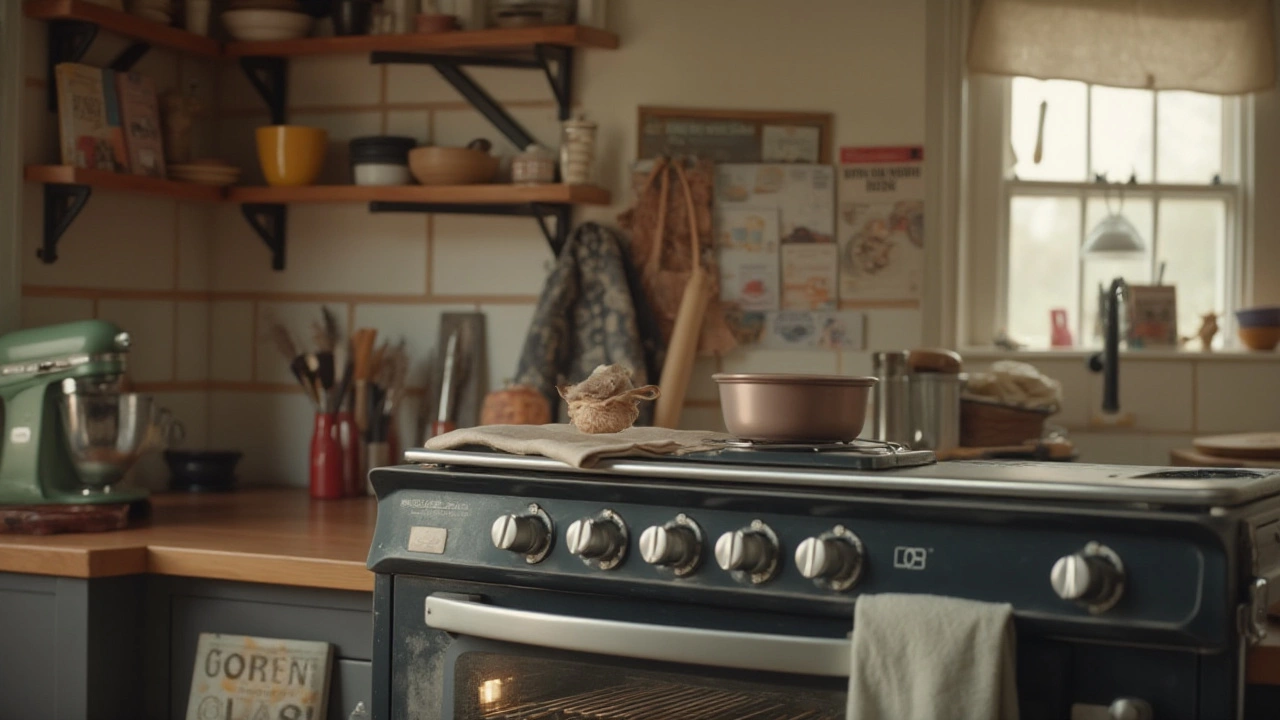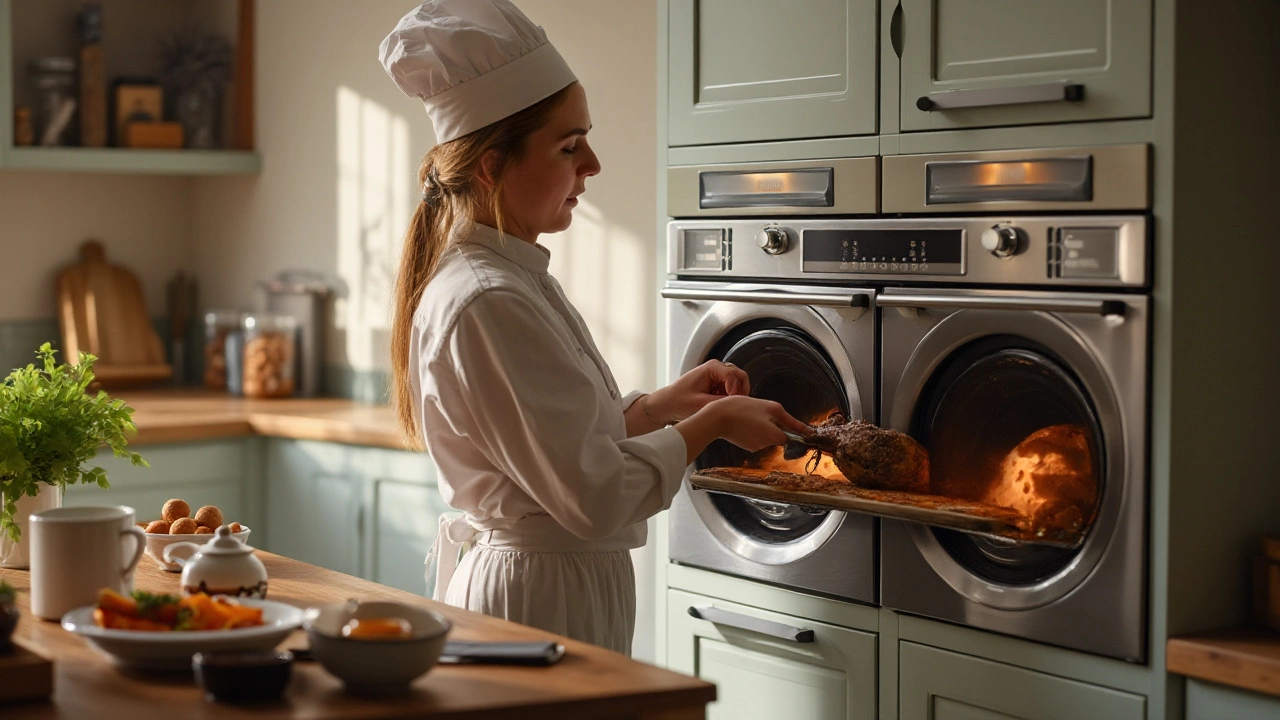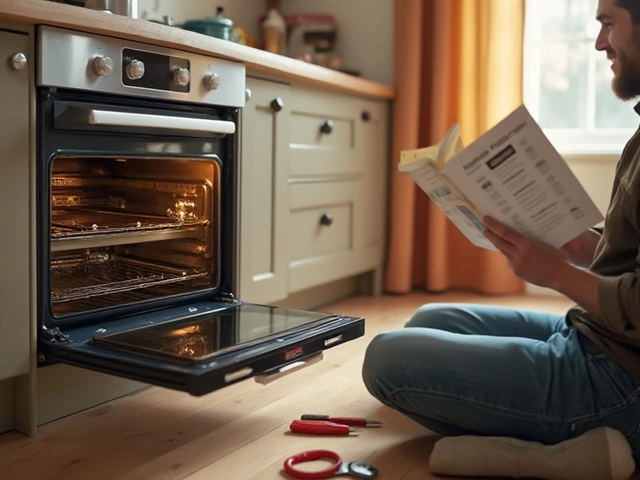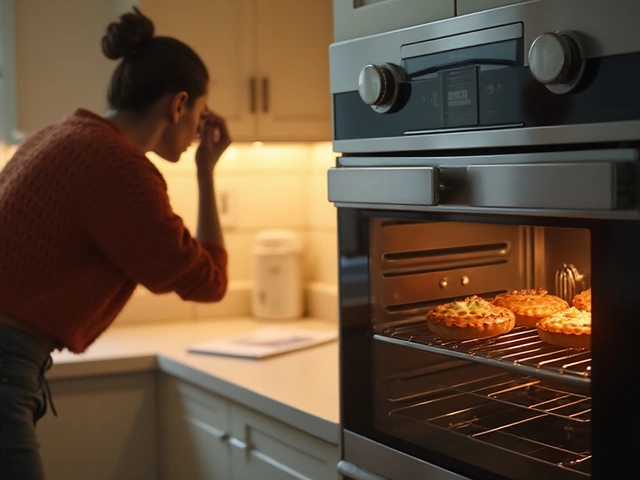Choosing the right electric oven can make or break your culinary creations. With so many brands out there, it can be daunting to figure out which one will offer the reliability and convenience you need in a busy kitchen. Lucky for you, diving into the characteristics of the most dependable electric oven brands can save you time and hassle down the road.
Whether you're redoing your kitchen or seeking to replace a worn-out appliance, understanding what sets top brands apart can guide you toward a choice that suits your needs. This guide delves into the features that make certain electric ovens stand the test of time, while also offering practical tips on how to maintain and potentially repair your oven if issues arise.
- The Importance of Reliability in an Electric Oven
- Top Brands Known for Reliable Electric Ovens
- Features Enhancing Durability and Reliability
- Common Repair Issues and Solutions
- Tips for Maintaining Your Electric Oven
- When to Consider Replacing Your Oven
The Importance of Reliability in an Electric Oven
When it comes to kitchen appliances, especially electric ovens, reliability isn't just a convenience; it's a necessity. Imagine preheating your oven one evening, the delightful aroma of a meal you’ve painstakingly prepared in your mind already wafting through your home, only to find the oven isn't functioning properly. It can truly throw a spanner in the works. This is why selecting a reliable electric oven is as crucial as the recipes you plan to cook. But what exactly makes reliability such a key feature, and what should consumers watch for when seeking a trusty brand?
Reliability in an electric oven is determined by a handful of factors. Firstly, the engineering quality of the appliance takes center stage. Brands known for reliable models tend to invest heavily in research and development, ensuring their products not only perform well but also last longer. High-quality components and robust build materials reduce the likelihood of parts wearing out quickly. This means fewer trips to the repair shop—something that certainly saves time and money in the long run.
Whether you're considering a new purchase or evaluating your existing appliance, something else to consider is efficiency. Most reliable electric ovens are designed to be energy-efficient, which is kind to both the planet and your wallet. With rising energy costs, opting for an oven that maintains consistent temperature control without consuming excess power is a smart move. It's a win-win situation, allowing you to indulge your love for cooking without fretting over utility bills.
Maintenance is another aspect closely intertwined with reliability. Often, the most trusted brands provide comprehensive user manuals and customer support, guiding you through regular upkeep practices. This ease of access to information is invaluable, as proper maintenance routines ensure your oven performs at its peak, prolonging its life and minimizing repair needs. A good clean-up after each use routinely helps to keep potential issues at bay.
The safety of using a reliable brand cannot be overstated either. With advanced safety features now commonplace, reliable ovens offer peace of mind. From automatic shut-off mechanisms to child safety locks, these considerations protect your home and family, making reliability not just a matter of performance but also of holistic safety.
As a matter of fact, in the fast-paced world we live in, consistency becomes almost as crucial as innovation itself. Modern kitchens demand appliances that rise to the challenge, day in and day out. Hence, it's worthwhile to consider reliable brands that have stood the test of time in offering quality electric ovens.
Top Brands Known for Reliable Electric Ovens
When it comes to electric ovens, reliability is often at the top of a buyer's checklist. A dependable oven not only makes cooking a pleasure but also ensures longevity, saving on potential repairs. Among the multitude of options in the market, some brands have consistently earned their reputation for producing reliable electric ovens. These brands blend advanced technology, user-friendly features, and high-quality craftsmanship to provide enduring products. For instance, when talking about reliability, it's hard not to mention Bosch and their sterling reputation. Bosch has been a household name for many chefs around the world, renowned for incorporating precision engineering into their kitchen appliances. Their electric ovens are celebrated for having consistent heat distribution, making baking and cooking more efficient.
Then there's Samsung, not only a leader in electronics but also a key player in the kitchen appliance market. Samsung ovens often include smart technology, allowing for seamless integration with other smart home devices. This not only gives the user more control but also optimizes cooking processes which, in turn, enhances the oven's longevity. A notable mention also goes to Miele, a brand esteemed for its meticulous attention to detail. It's not uncommon to find Miele electric ovens complementing modern kitchens where not only performance matters but also aesthetic appeal. Their self-cleaning features and advanced temperature controls are particularly beloved by users who want efficiency with minimal fuss.
Another standout brand is Whirlpool, often lauded for its affordability without sacrificing quality. Whirlpool's reliability often lies in its robust construction and straightforward, intuitive user interfaces. Users frequently tout the durability and ease-of-use of Whirlpool ovens, making them an excellent choice for those looking for dependable performance at a reasonable price. According to a survey, over 70% of Whirlpool users reported fewer breakdowns compared to other brands, a testament to their reliability. In a similar vein, KitchenAid offers a traditional yet innovative oven line-up. Known for classic aesthetics paired with state-of-the-art features, it’s a brand highly favored by those who appreciate a balance of form and function.
Let's not forget Electrolux, a brand synonymous with culinary innovation and kitchen appliances that have stood the test of time. Electrolux ovens are well-regarded for their versatility and innovative cooking technologies, such as steam cooking, which helps preserve nutrients and flavors. This brand has become a staple in professional kitchens around the globe, with reliability being a key selling point. Dick Reed, a prominent chef, once said, "Electrolux changes the cooking landscape by innovating relentlessly and thinking ahead of time."
"When I think of reliability, few brands rival the consistent performance and durability offered by most Electrolux electric ovens." — Consumer Reports Kitchen Appliance Edition
Each of these brands offers distinctive features that cater to a variety of cooking needs and preferences. When selecting a reliable electric oven, it's important to consider what each brand brings to the table. Whether it's cutting-edge technology or time-tested durability, knowing the strengths and unique selling points of each brand can guide you to make a well-informed decision that aligns with your culinary aspirations.

Features Enhancing Durability and Reliability
When it comes to choosing an electric oven that won't disappoint, looking into specific features that boost durability and reliability is crucial. One of the standout features in modern electric ovens is their self-cleaning capabilities. This function not only saves time but also contributes to the longevity of the oven by preventing buildup that could impair performance. A self-cleaning cycle typically elevates the temperature inside the oven to a point where food residuals turn to ash, making it easy to wipe away, thus maintaining efficiency and reducing wear over time.
In the realm of electric oven innovation, convection technology is another hallmark of reliability. Unlike traditional ovens, convection ovens use a fan to circulate hot air evenly throughout the cavity. This ensures that heat is distributed more consistently, which helps in avoiding hotspots that can lead to uneven cooking or bake that may strain the appliance over time. The use of convection not only enhances cooking outcomes but also potentially extends the lifespan of the heating elements by preventing unnecessary strain.
A key addition in some top-of-the-line ovens is the incorporation of smart technology. Many upscale brands now offer ovens with Wi-Fi connectivity and smart sensors that can automate cooking processes. These smart features allow the oven to perform constant checks and balances, tweaking the heat or time needed to achieve perfect results without human intervention. It means fewer errors that lead to spoilage and, consequently, less usage-related wear and tear.
As the renowned appliance expert David Trubridge once remarked, "The integrity of an appliance relies not only on what it's made of but how intuitive its design lines up with the daily habits of its user."
Moreover, the build quality of the oven can't be overstated when discussing long-lasting performance. Stainless steel interiors are particularly lauded for their heat-resistant properties. They contribute to maintaining the oven's core temperature with minimal fluctuation, which is necessary during high-intensity cooking and aligns well with energy-efficient principles. Enamel-coated racks and smooth-glide ball-bearing mechanisms are other aspects worth noting for their role in durability; these features help support the playout of your cooking day without sticking or jamming issues that could escalate repair needs.
Energy efficiency remains a pivotal feature for any electric oven's reliability. Look for models with a strong Energy Star rating. An energy-efficient oven not only cuts down on your utility bills but operates optimally, protecting its vital components from overuse. This operating efficiency extends from quick preheating functions to complex baking cycles and is a good marker of an electric oven's construction quality.
A well-laid oven should also possess robust insulation and a triple or quadruple glazed door to trap the heat inside efficiently. This not only ensures safety when the oven is in use but also maintains an even temperature inside, which guards against component burnout and inefficient energy use. Such features collectively make sure that the oven remains a reliable part of your kitchen for years to come. Indeed, when choosing an appliance, it's worth evaluating the balance between innovative features and the tried-and-tested build quality that top brands are celebrated for.
Common Repair Issues and Solutions
When it comes to maintaining your electric oven, knowing some common repair issues can prepare you for any unexpected breakdowns. Electric ovens are generally reliable, but like all appliances, they can encounter their fair share of ailments over time. One of the most frequent issues users report is uneven cooking or heating, which usually points to a problem with the temperature sensor or the heating elements. This can be particularly frustrating when you've prepped a perfect roast only to find cold and hot spots. To troubleshoot, start by checking if the oven is properly calibrated, a process often detailed in the manual. If calibration fails, inspecting the thermal fuse and the electrical connections of the heating elements becomes crucial. If these signs persist, replacing the heating element might be necessary.
According to a recent survey by Which Magazine, "Over 20% of users have experienced issues with their electric oven in the first three years, primarily related to uneven heating or faulty sensors."
Another issue that homeowners encounter is when the electric oven simply won't heat up. This can throw a wrench in your culinary plans, but often it's due to a malfunctioning bake or broil element. These components are essential in generating the necessary heat inside the oven cavity. To diagnose, perform a quick visual check when the oven is off and cooled down. You might notice visible damage such as blisters or breaks in the element. If that’s the case, it needs to be replaced. It's also wise to examine the oven’s internal wiring for signs of wear or damage. In some models, the main control board could be the culprit if basic troubleshooting doesn’t resolve the heating issue.
Other common problems include the oven door not closing properly, leading to heat escaping. This can often happen when the seal or gasket wears out, becoming less effective over time. Effective solutions here involve cleaning and sometimes replacing the gasket. Moreover, misaligned doors — either from installation or plain usage — can cause inefficiencies. Re-aligning and tightening the hinges might be required in such cases. It's not uncommon for some doors to require complete hinge or spring replacements, especially in older models.
| Issue | Possible Causes | Solution |
|---|---|---|
| Uneven Cooking | Poor calibration, faulty heating element | Re-calibrate, replace heating element |
| Won’t Heat Up | Burned out element, wiring issues | Inspect and replace elements or wires |
| Door Won’t Close | Worn gasket, misaligned hinges | Replace gasket, adjust hinges |
Lastly, if your oven is taking longer than usual to reach the desired temperature or fails to maintain heat, it might be an indication of compromised insulation or a failing thermostat. Regular maintenance, such as cleaning around the heating elements and checking for any blockages in ventilation, can prevent many of these issues. For thermostat problems, testing the component with a multimeter can confirm its functionality. Once identified, thermostats are usually straightforward to replace, bringing your beloved kitchen appliance back to working like new. Remember, these handy troubleshooting tips and regular check-ups not only extend the life of your appliance but also enhance your cooking experience.

Tips for Maintaining Your Electric Oven
Keeping your electric oven in top-notch condition is not merely about ensuring its longevity, but also about safeguarding the deliciousness of your meals. Start by cleaning it regularly. Grease and food particles often build up over time, creating unpleasant odors and possibly affecting the way your oven heats. It's recommended to wipe down spills immediately with a damp cloth, but you should also aim for a deep clean at least every three to six months. This could entail removing the racks and washing them with soapy water, then using a specialized oven cleaner for the interior. Ensure the oven is cool before starting, and always follow the manufacturer’s instructions to prevent damaging any surfaces.
Beyond cleaning, calibrating your oven's temperature can significantly improve its performance. Over the years, an oven may deviate from its set temperatures. To test this, place an oven thermometer inside and compare the reading with the temperature setting. Adjust the temperature dial accordingly, either using the instructions manual or with professional assistance if necessary. It’s also wise to periodically check the oven door seals and hinges. Faulty seals can cause heat loss, which means your meals won't cook as evenly and your energy bills might rise. Use the paper test: close the door on a piece of paper. If it slips out easily, you might need new seals or door adjustment.
According to Jane Smith, a home appliance expert at Appliance Central, "Routine maintenance not only extends the life of your electric oven but also ensures it performs efficiently, saving you energy costs and stress in the long run."
Ventilation plays a crucial role in the efficient operation of your oven. Ensure your kitchen is equipped with adequate ventilation to expel heat, smoke, and food fumes away from your cooking space. This not only protects you but also helps the oven work without overheating. Also, inspecting and replacing burnt out elements when needed can greatly prevent a decline in your oven's efficiency. Pay attention to any strange noises or smells, which might be the early signs of a failing heating element. If you notice anything unusual, it's advisable to have it checked sooner rather than later.
Using a surge protector could also add an extra layer of safety by protecting your appliance against power surges, which can cause severe damage. Lastly, consider creating a care schedule to remind yourself of maintenance tasks, ensuring no important steps are missed. Engaging with your oven's manual too can be an enlightening experience and might reveal simple solutions to common oven repair issues. Besides, remember that like any other household machine, your oven will eventually need some level of professional check-up to maintain its full potential or to repair any hidden issues lurking beneath the surface.
When to Consider Replacing Your Oven
Every electric oven has its day. You may find yourself fretting over whether it's time to retire your trusty appliance or give it another chance. One key indicator of an oven's lifespan is its consistent performance. If your oven frequently underwhelms with unevenly cooked dishes, takes an age to heat up, or erratically shuts off without warning, it's waving a red flag. While occasional blips might be chalked up to power surges or a temporary malfunction, persistent issues often signify impending failure.
Another factor to weigh is the age of the oven. Modern electric ovens are designed to last, typically between 10 to 15 years. If your oven is nearing or exceeding this age range, it might be marching towards retirement. It's thrilling how technology has advanced, and newer models often boast energy efficiency, which could cut down on your monthly bills, thereby softening the blow of investing in a new appliance.
Consider also the cost of repairs. If you've been calling in the repair crew more frequently and the expenses are making a dent in your wallet, it might be wiser to channel those funds into a new purchase. A good rule of thumb often mentioned by appliance professionals is the 50% rule: if repair costs are more than half the price of a new oven, it's time to start looking for a replacement. Compare prices and features across different brands—your next investment might be a cutting-edge addition that transforms your culinary game.
"Appliances, like any other thing in life, have their lifespans. The decision to repair or replace must consider current value and future potential," notes Amanda Ruggieri, home appliances writer.
If there's a constant fear in the back of your mind about safety—be it smelling gas (if applicable), exposed wiring, or curious sparks—it’s crucial to prioritize safety over sentimentality. Ovens are not just tools but pivotal parts of our homes; they deserve respect and attention. In this case, replacing your oven does justice to your family's safety and your peace of mind. Updating to a new model also grants an opportunity to redefine your kitchen aesthetics, integrating seamlessly with modern décor and making the most of improved features.
While it's simple to be attached to an appliance that has served years of delicious meals, weighing these aspects can lead you toward a decision that makes practical and financial sense. Remember, an oven that performs like a reliable workhorse ensures every culinary endeavor is a pleasure rather than a chore. Assess your oven's current state with a discerning eye and make a choice that best serves your home's happiness and efficiency.




